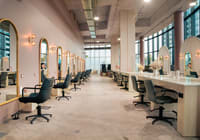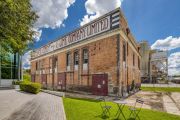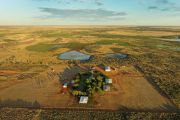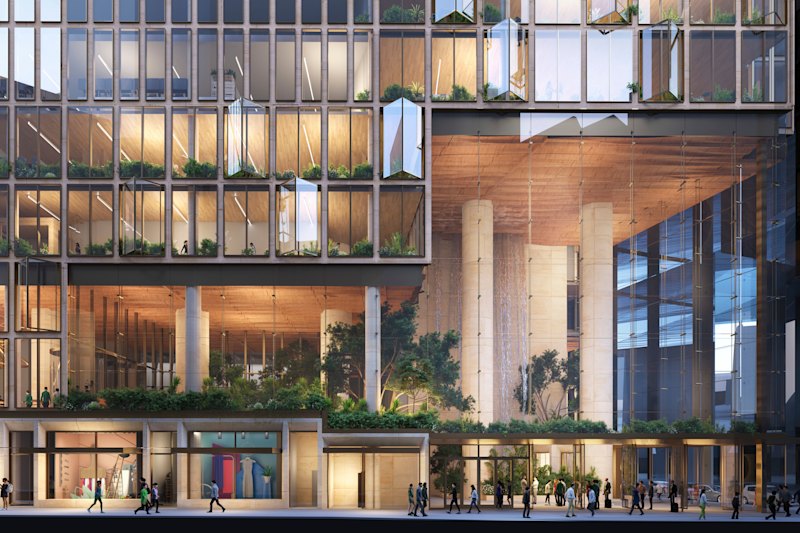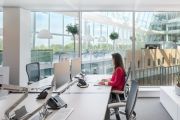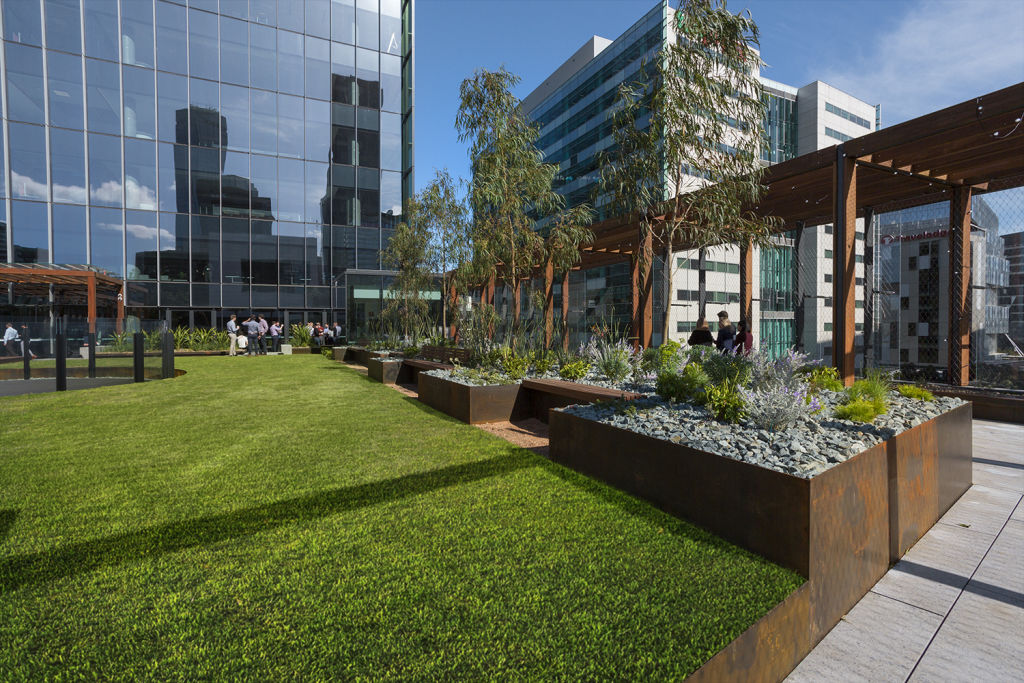
Green space in and around office buildings is producing healthy workers
With an increasing number of employers recognising the importance of staff wellness, the implementation of green space in office buildings has become an increasingly prominent design element.
“We all love green space, it’s human nature to want to be near to nature. So as our cities densify and more of us live and work closer together, we really understand that green space is a basic need that is in fact in decline in many urban environments,” Lendlease workplace and change general manager Natalie Slessor said.
“[This is] coupled with research telling us that if we are close to nature we can think more clearly, feel more creative, we might even forget for a moment that we are at work and have that breakthrough idea, and feel happier.
“At Lendlease we feel there is a compelling reason to always consider how we can integrate nature into urban regeneration.”
Lendlease’s new Victorian office at One Melbourne Quarter is home to about 400 employees, across levels four to six of the 13-storey building.
The precinct’s Sky Park is Wi-Fi enabled and encourages staff to work outside.
It has a landscaped garden, lawn, outdoor seating and an outdoor meeting room for the building’s tenants.
Ms Slessor said Sky Park was a great example of how green space had been created where it had never previously existed.
“It benefits both employees and the public by providing a new green park for Melbourne’s CBD, just above the hustle and bustle of Collins Street,” she said.
“The park’s biophilic design – which refers to design that reflects the natural world – is an essential ingredient in enhancing employee health and wellbeing, encouraging people to work or recharge outside the office.
“Increasingly, office designs are bringing the outdoors in. Our clients are requesting workplace designs with abundant light, natural materials, indoor plants and green zones to help create a healthier ambience and to lower stress levels to assist with employee performance.”
Once construction of Melbourne Quarter is complete, more than half of the precinct will be dedicated to open public space.
The final stage of the elevated Sky Park will be delivered with the precinct’s third commercial building, Melbourne Quarter Tower.
Hamish Sutherland, Knight Frank’s partner and head of office leasing, Victoria, said: “Employers are looking to provide the best environment for their employees to encourage productivity, and wellness is very much front of mind. Increasingly, this includes incorporating greenery and open spaces employees can utlisise, to create aesthetically pleasing areas with a connection to nature.
“We are also seeing developers looking to deliver more outdoor space to create areas where workers are able to get away from the outdoor environment and without having to stray too far from the workplace. Developments such as Lendlease’s Melbourne Quarter are at the forefront of providing this type of green open space.”
Colliers International project management director Lee-Anne Koh said the implementation of green space immediately softened a physical workspace, while simultaneously improving air quality and comfort levels for everyone.
Dr Libby Sander, assistant professor of organisational behaviour at Bond Business School, said the wellbeing of staff was becoming increasingly important to organisations, with workspace stress on the rise, particularly in open-plan office designs.
Incorporating green space in design was achievable via not just plants but by implementing timber, natural shapes, art work and water views, she said.
“So the reason why there has been an increase in these things being implemented is we know from studies, for example, just looking at a green roof for 40 seconds – taking a micro break – can actually reduce people’s stress levels.”
She said green space design elements helped staff reduce and recover from stress, and be able to complete their work better.
“In terms of why it is important from a client’s perspective, I think there’s more and more emphasis on organisations being responsible for their behaviours and actions, and stakeholders externally have increased their expectation of that,” she said.
“So clients who come in and see it [green space] in a close environment, it will have the same benefits for them although on a shorter term basis than it does for the employees.”
Ms Slessor said time spent in natural outdoor settings provided a range benefits for employees and clients, from resetting circadian rhythms to helping improve concentration.
“Spending time in nature can improve your ability to concentrate, reduce attention fatigue and is shown to improve task performance by 20 per cent,” she said.
“Green spaces are a driver of productivity. As workplaces become more integrated with everyday life, many employees are seeking out activated third spaces to conduct business in.
“Not only is productivity improved by the creation of great places, it also helps to attract and retain the best talent, who want to work in the best places.”
Ms Koh said employers who had implemented green design through building selection and fitout design were quickly seeing results in productivity and enjoyment throughout the workplace.
“Buildings which provide access to green spaces, physical paths of travel and working environment which are light-filled, with fresh air and natural plants are seen to be forward-thinking to their business,” she said.





